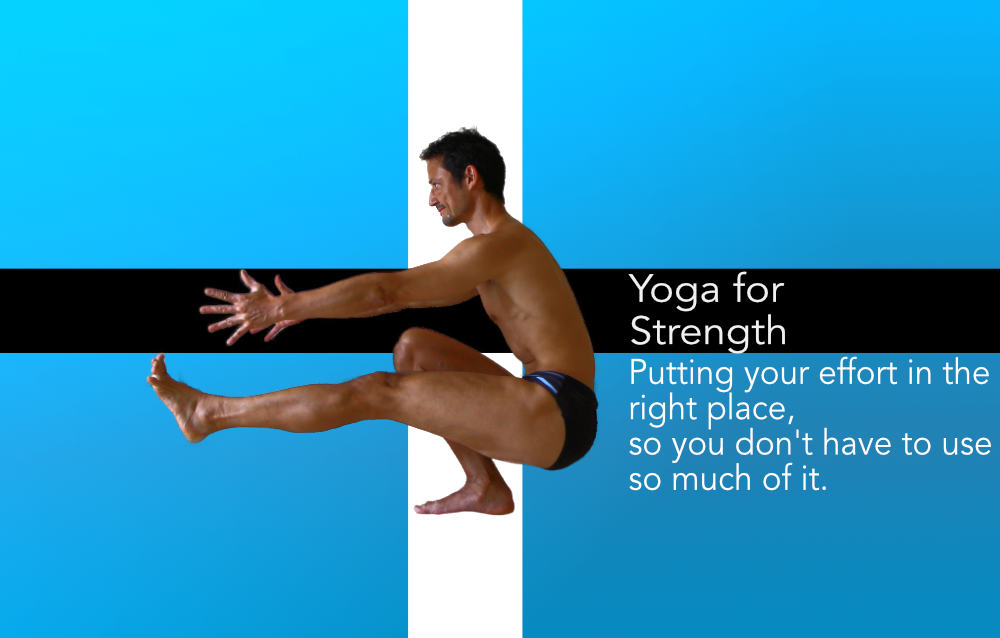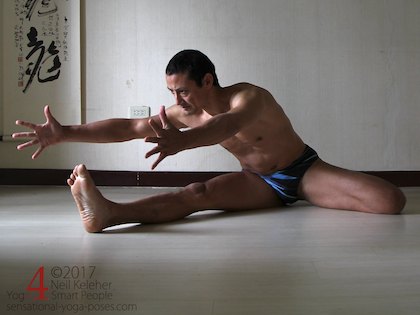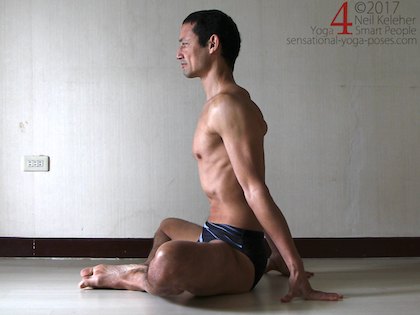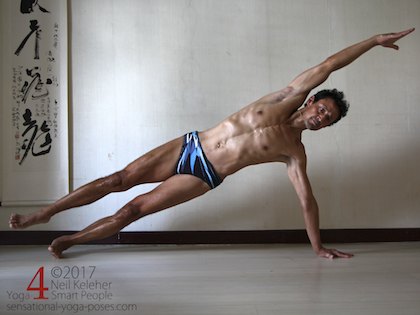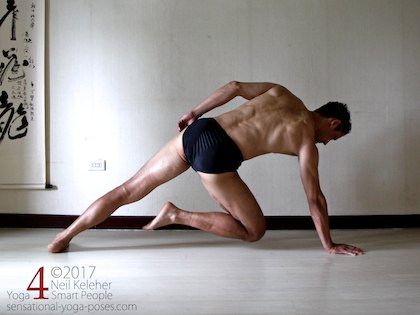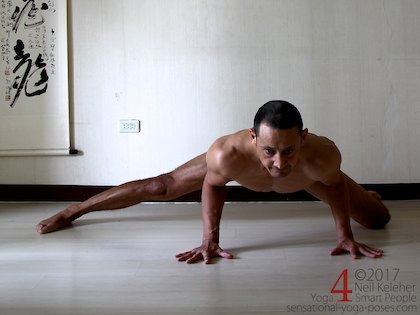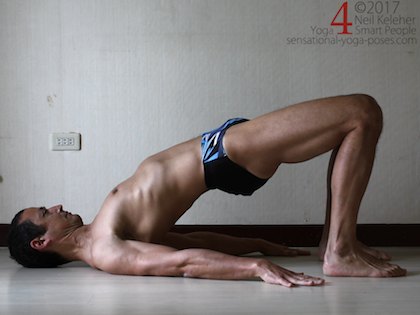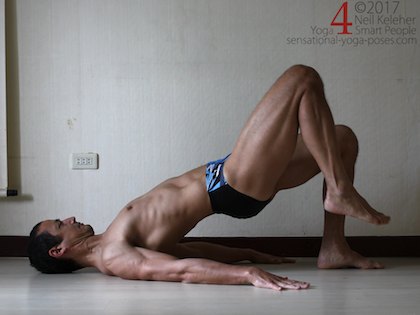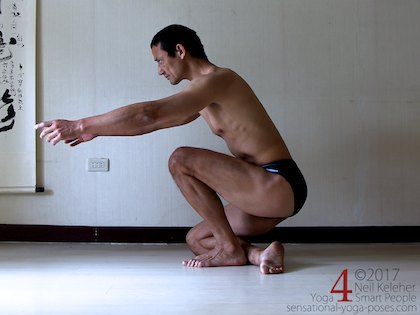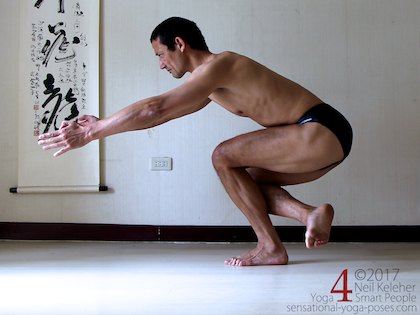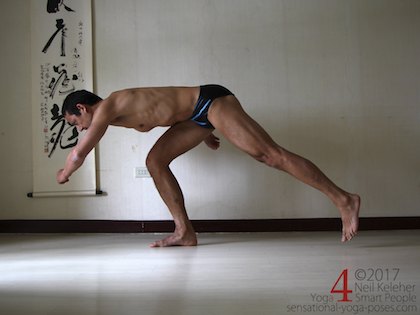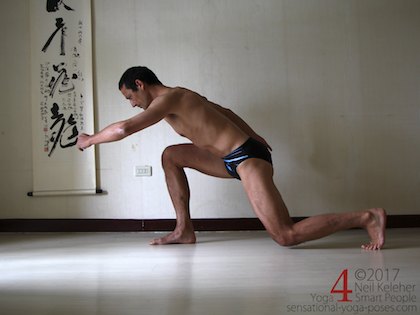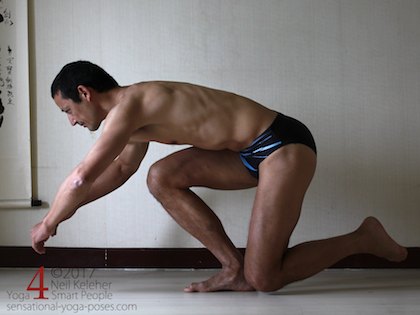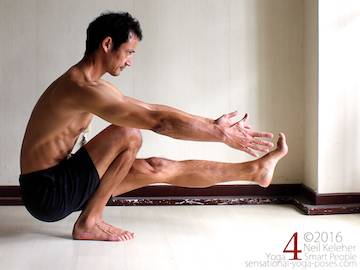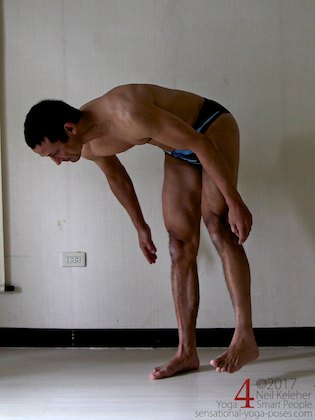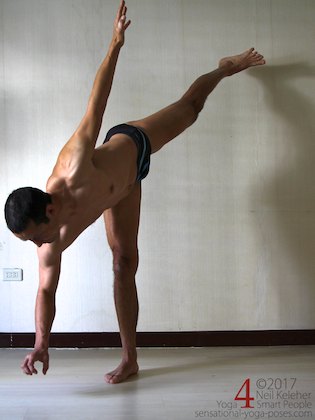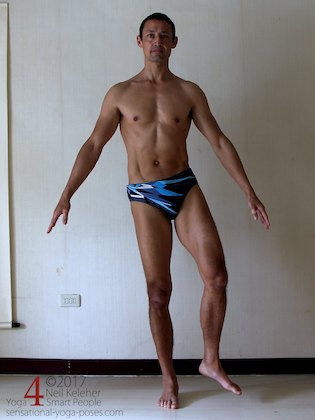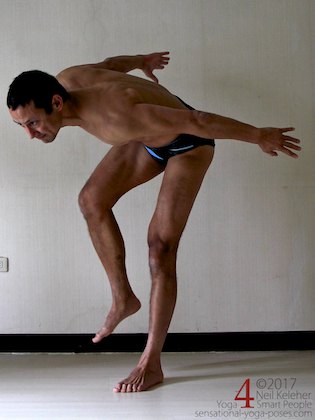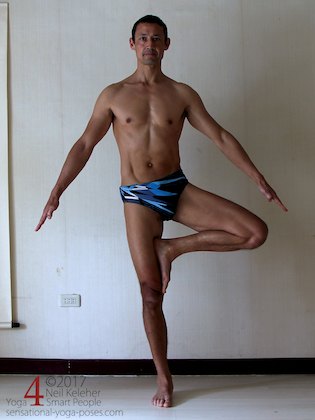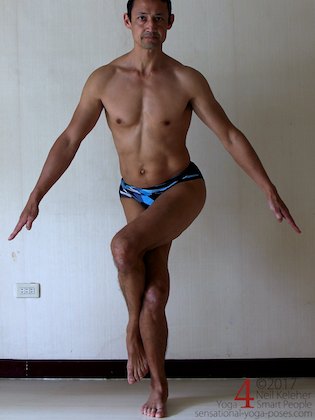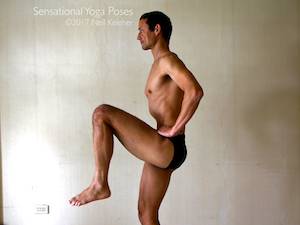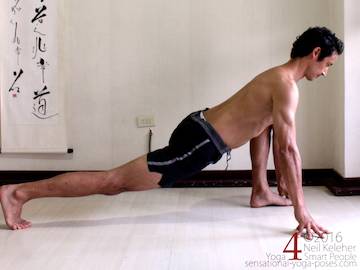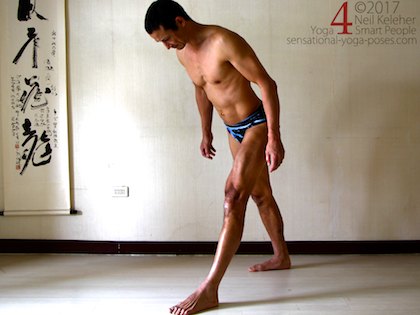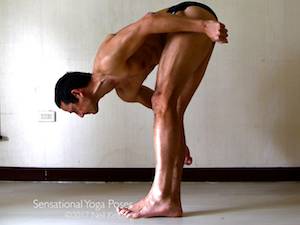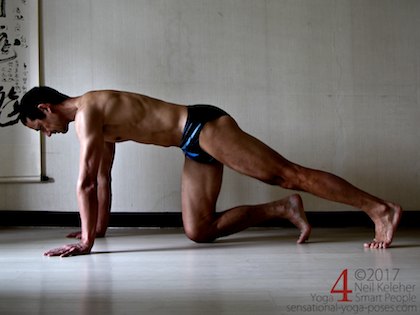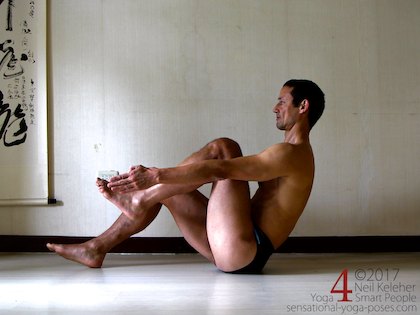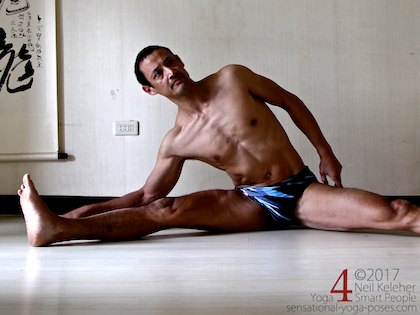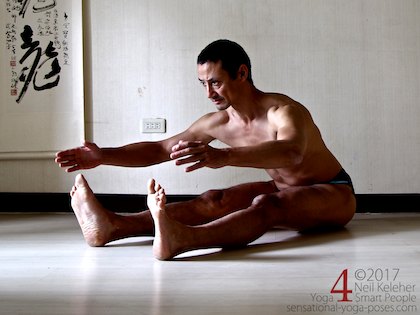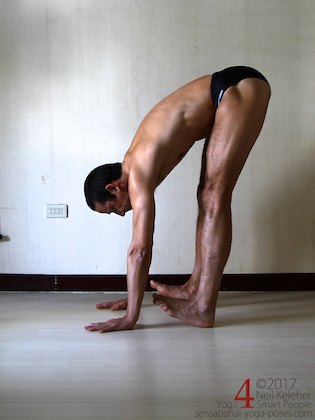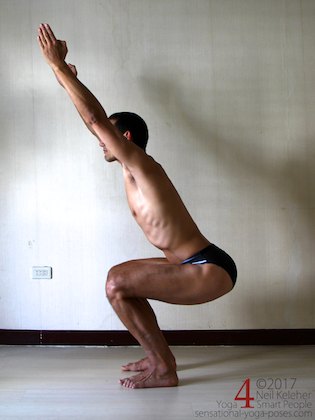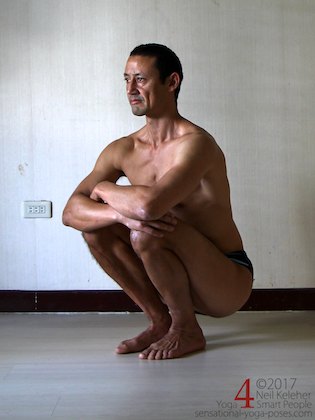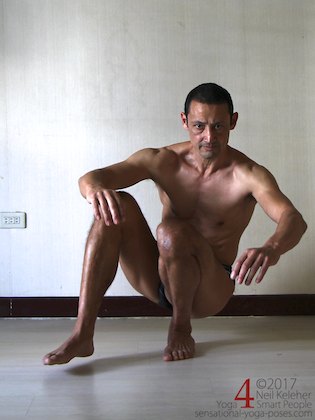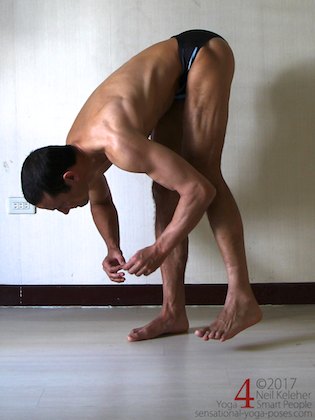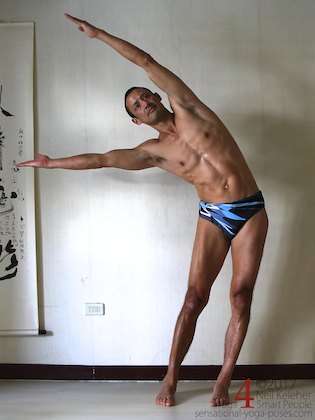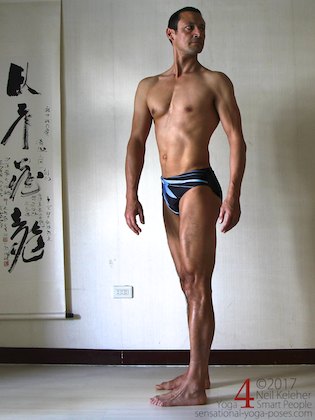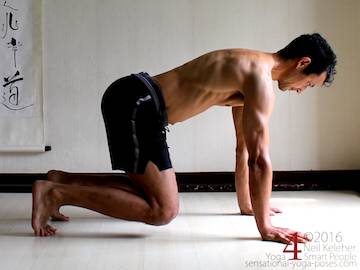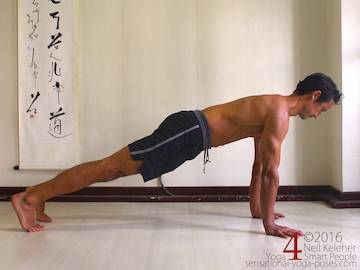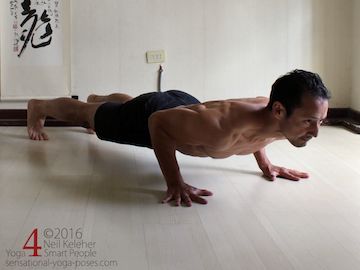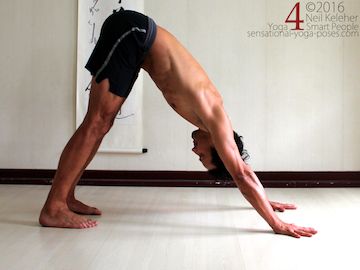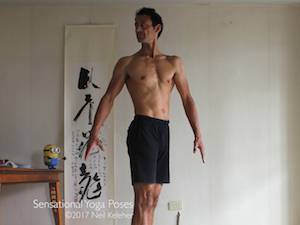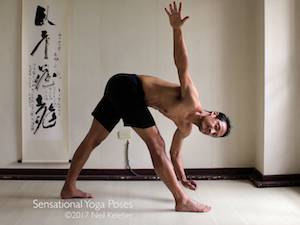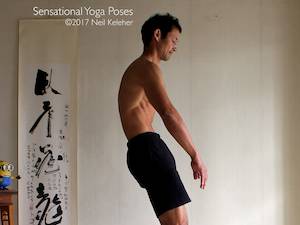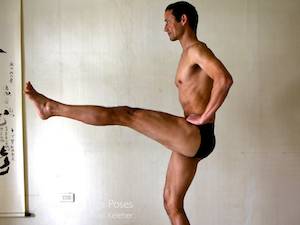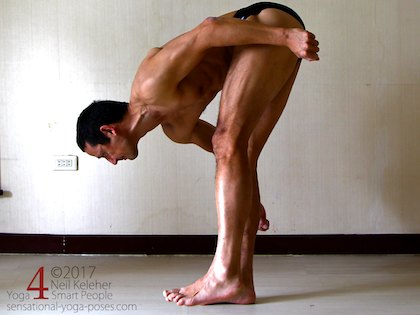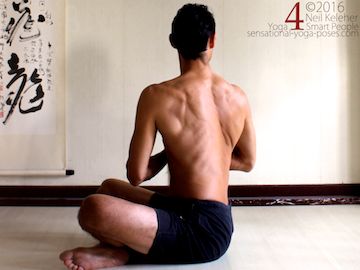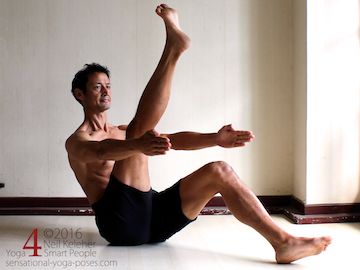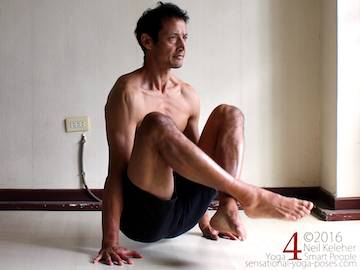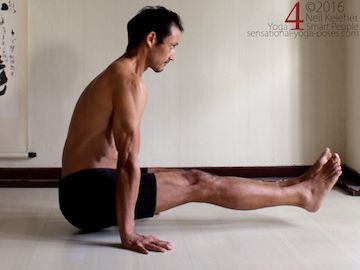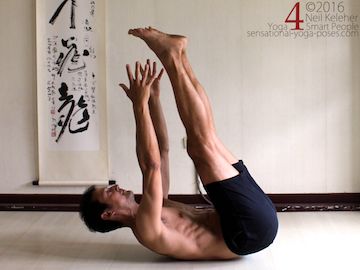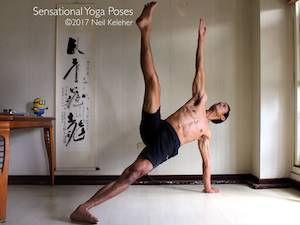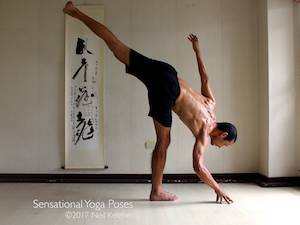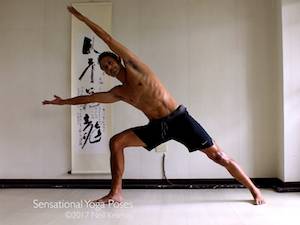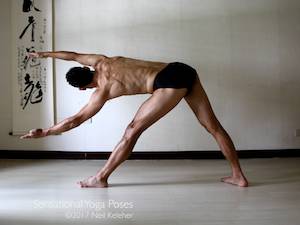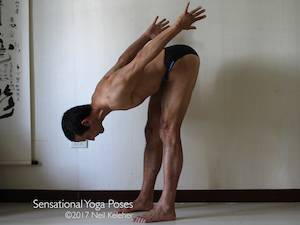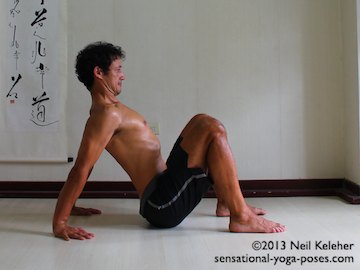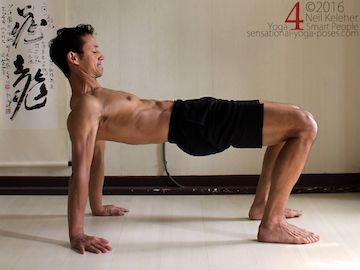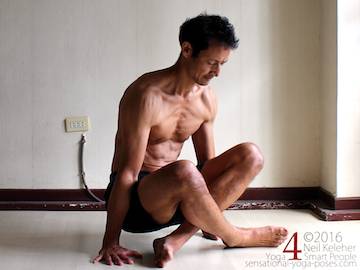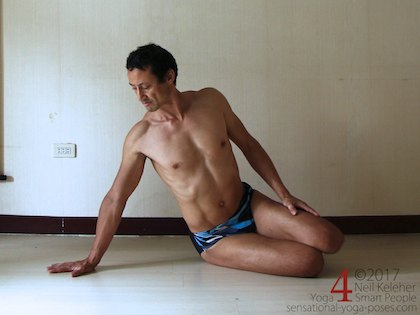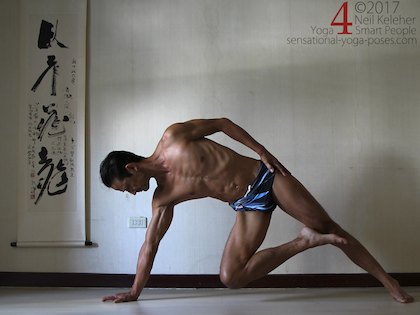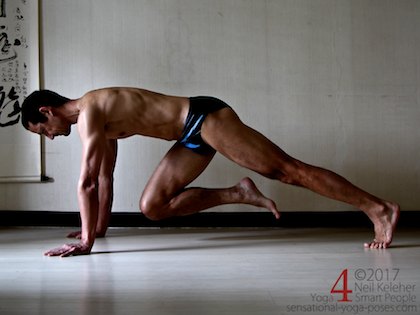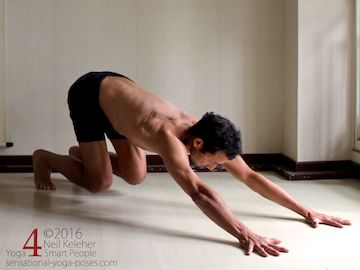Yoga for Strength
Configuring the Body to Be Stronger with Less Effort
Updated: 2019 08 021
Yoga for Strength is about directing your awareness and your effort so that you can apply strength effectively with less effort.
The focus is on feeling muscles, joints and connective tissue so that you can control them effectively. The important point here is that muscles not only move the body and stabilize it, they also are the main drivers of proprioceptive information.
Feeling muscle activation and connective tissue tension (and responding to this information when required) is the rough equivalent of listening to changes in engine pitch so that you know when to change gears.
For stronger yoga poses the first step is to create stability where it is needed within your body.
- You might choose to stabilize your feet, heels and/ankles to give your leg muscles a stable foundation.
- You might choose to stabilize your ribcage and your shoulder blades to give your shoulder and arm muscles a stable foundation.
- You may also choose to stabilize your knees
- and you could also choose to stabilize your hips
The better you are at creating stability, the easier it is to get stronger with less effort.
If you are having problems developing strength it may be due to a lack of stability somewhere within your body. Notice where you lack stability, so that you can work at creating it.
Then you can get stronger with less effort.
You can read more about creating stability in Exercises to Improve Stability
The above leg strengthening exercises can be used to strengthen the back of the legs, the front, or the inner or the outer parts of the legs.
Additional leg strengthening exercises include Body weight squat, deep squats, Hamstring strengthening exercises, learning the pistol squat, squats.
You can also see videos of leg exercises here leg and knee strength exercises videos.
The above hip exercises may look like your usual yoga poses, but you can turn them into Hip strengthening exercises by deliberately moving and feeling the hips. Once you can feel yor hips while moving them, you can then work at activating your hip muscles without causing movement.
For the above Hip flexor strengthening exercises, you strengthen the hip flexors by either actively flexing the hip (bending the hip forwards) or by resisting it being bent forwards.
Note, where you aren't standing, the torso can be used as the foundation for these exercises. When standing, you have the choice of using your standing leg (or legs) as the foundation, or your torso.
For strengthening and stretching your hip flexors read hip flexor stretching and strengthening.
The above knee strengthening exercises include a mix of standing straight knee and bent knee exercises. The key point for all of them is to activate your knees (and feel the activation).
The poses below can all be used to strengthen your abs.
For additional ways to work on the abs, check out Agni Sara and Nauli Kriya. These could be thought of as ab isolation exercises.
Also check out Core stability exercises for tips on activating the core in poses like plank and side plank.
And also check out thesetransverse abdominis exercises.. Why? The transverse abdominis is like a tensioning device for the other abdominal muscles. It can make it easier to control the overlying abdominal muscles.
For back strengthening, one thing you can work on is Spinal back bending exercises.
To help prevent low back pain, these standing exercises may help: standing exercises for low back pain.
For strengthening the back, read back strengthening yoga poses.
For a focus on the upper back in particular try these upper back exercises.
The above shoulder strengthening exercises generally use a straight arm position to support the weight of the body.
Additional shoulder strengthening exercises that don't necessarily involve body weight include: Rotator cuff exercises, standing shoulder strengthening exercises
You can also work on arm strength while doing standing forward bends. Read more about how in arm strengthening standing forward bends.
You can read more about the shoulders and how to strengthen them in shoulder yoga.
And for a simple way to exercise the shoulders, check out Dance of shiva. One way to use it is to practice scapular control with the dance of shiva.
For a focus on bent arm strengthening exercises check out Arm strengthening exercises
Also check out this article, yoga push ups for learning to lift up into chaturanga dandasana from the ground up.
For another look at chaturanga dandasana, check out these two articles:
For tips on kettlebell strengthening and applying body awareness and yoga principles to kettlebells and weights you can read kettlebell exercises and turkish get up.
Published: 2017 12 08
Updated: 2021 02 11
